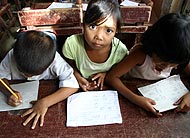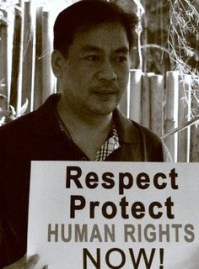By: Dr. Renato G. Mabunga
On Accessibility and Affordability:
Various studies on the current student dropout rates show that of the 10 pupils entering grade 1, 66% would eventually finish grade six; 43% would graduate high school; and, only 20% would successfully finished college. Of the statistics, there is a stark 80% of the 55 million considered out of school youth or 57% unable to fully access the right to education in the Philippine today. One major reason for this is poverty.
The latest report released by the National Statistical Coordination Board (NSCB) pegged the Philippine poverty incidence at 20.9% in 2009.[i] In such situation, a Filipino needs Php974 monthly to meet his/her food needs and Php1,403 to stay out of poverty; a family of six has a daily and monthly requirement of Php277 and 8,421, respectively. For the National Capital Region (NCR) however, a family of 6 needs to earn Php9,901 monthly or Php326 daily to live above the poverty threshold. This means that the government demands each Filipino to live with Php41.25 a day. This computation is based on the Refined Official Estimation Methodology series of 2006 as demanded by the Executive Order 352. This methodology defines poverty threshold, as the cost of minimum basic needs, food and non-food; and, the ‘poor’ is as those whose income fall below the official poverty threshold defined by the government. In April 2011, the Social Weather Station (SWS) survey revealed, “some 20.5 percent of Filipinos or about 4.1 million families are going hungry while more Filipinos are considering themselves poor”[ii]. A family of six in the NCR with a monthly minimum wage of Php11,076 (Php404 minimum wage + Php22 ECOLA as approved in May 2011 x 26 working days) will spend almost 64% for food alone and the remaining 36% will be subdivided among healthcare, rentals (including housing), water, electricity, clothing and education among others. It was estimated that in the first quarter of 2011, 51% of the population considered themselves poor. Though basic education is provided free, essential needs such as food, shelter, clothing plus transportation and other incremental expenses in schools made it unaffordable for many.
Another issue on the accessibility of right is the number and location of schools. The Department of Education reported to have almost covered all municipalities and barangays in the whole archipelago with 55,260[iii] elementary and secondary schools both public and private. The disparity in number between the two is highlighted with the gap of 34,462 schools from 44,846 elementary schools to 10,384 high schools both private and public for the school year 2009-2010. This is despite the officially reported teacher-pupil/student/room ratio of 1 to 36 and 1 to 38 respectively, which according to the Teachers Dignity Coalition (TDC) is actually 1 to 45 and 1 to 60 ratio for school year 2010-11. No wonder that in Metro Manila alone, three shifting of classes are done in a day to rationalize the lack of schools/classrooms, teaching personnel, and accommodate large number of pupils and students.



